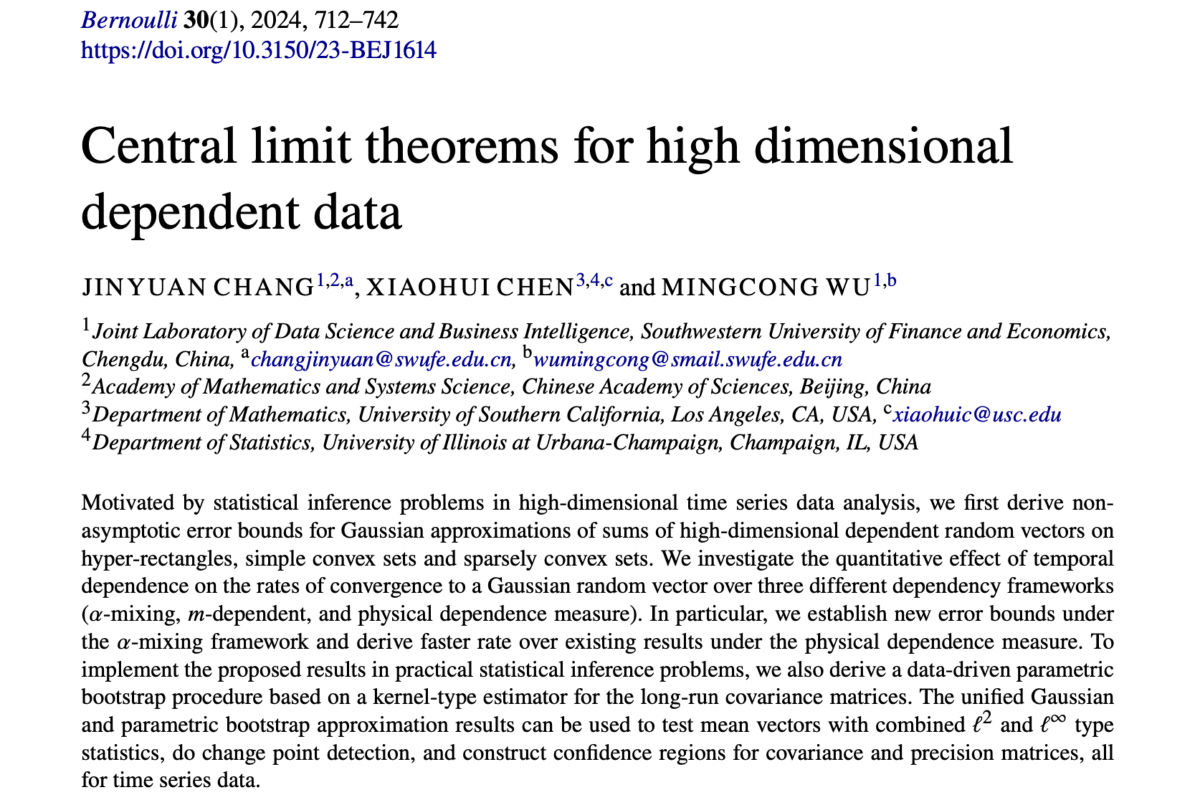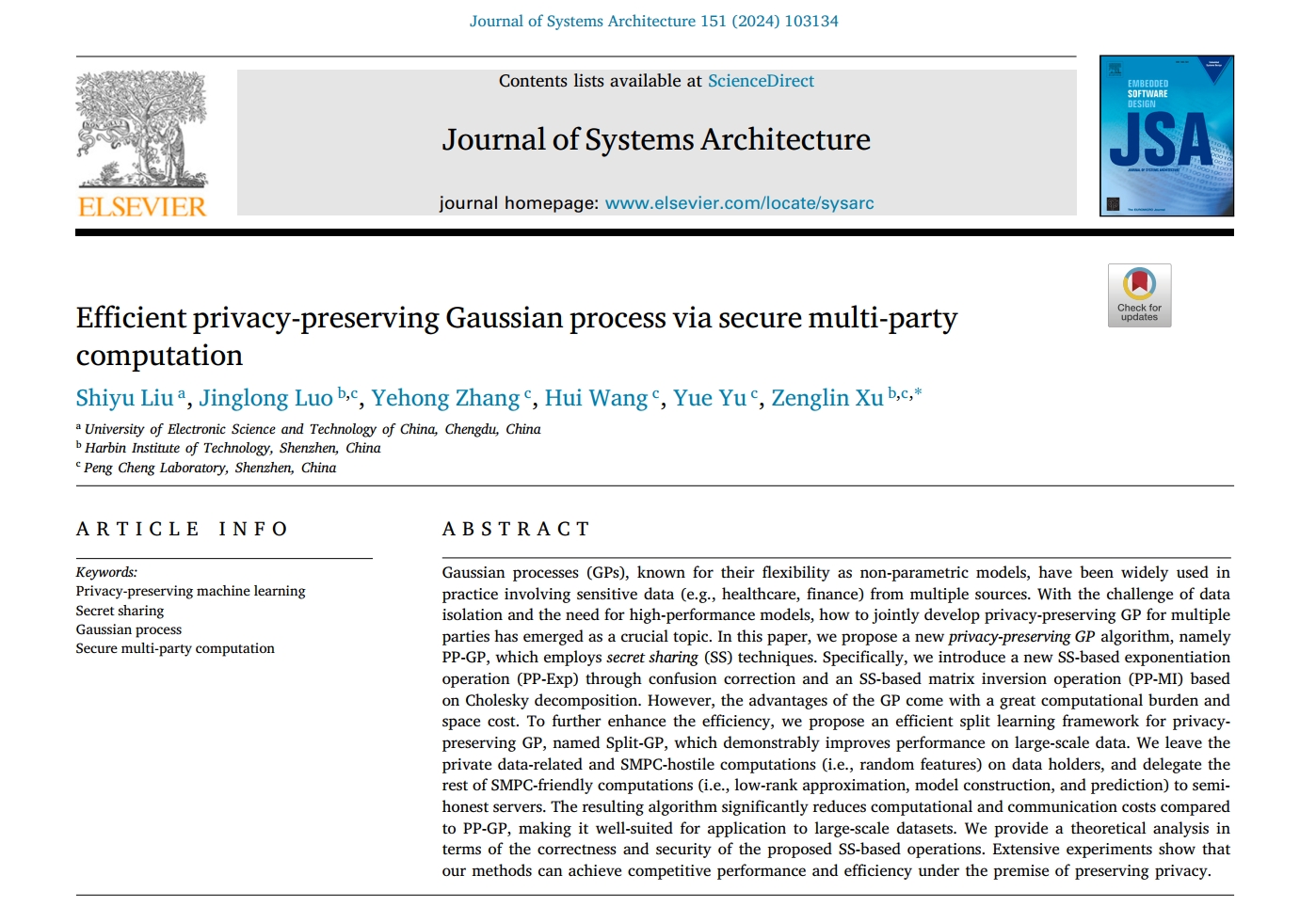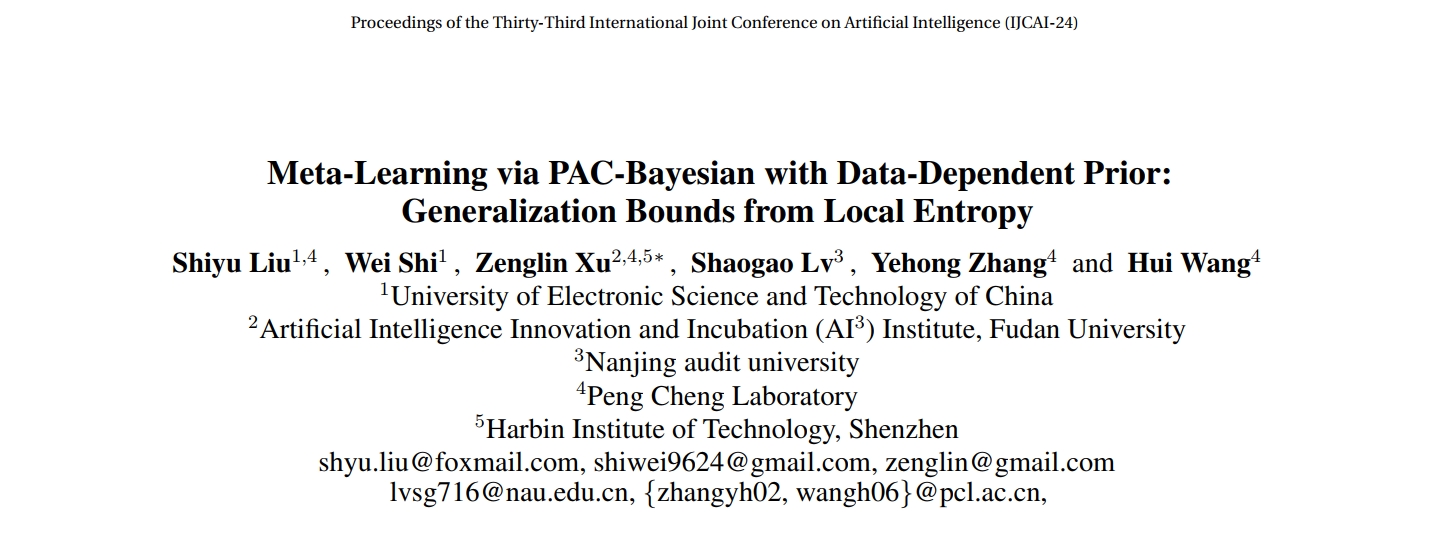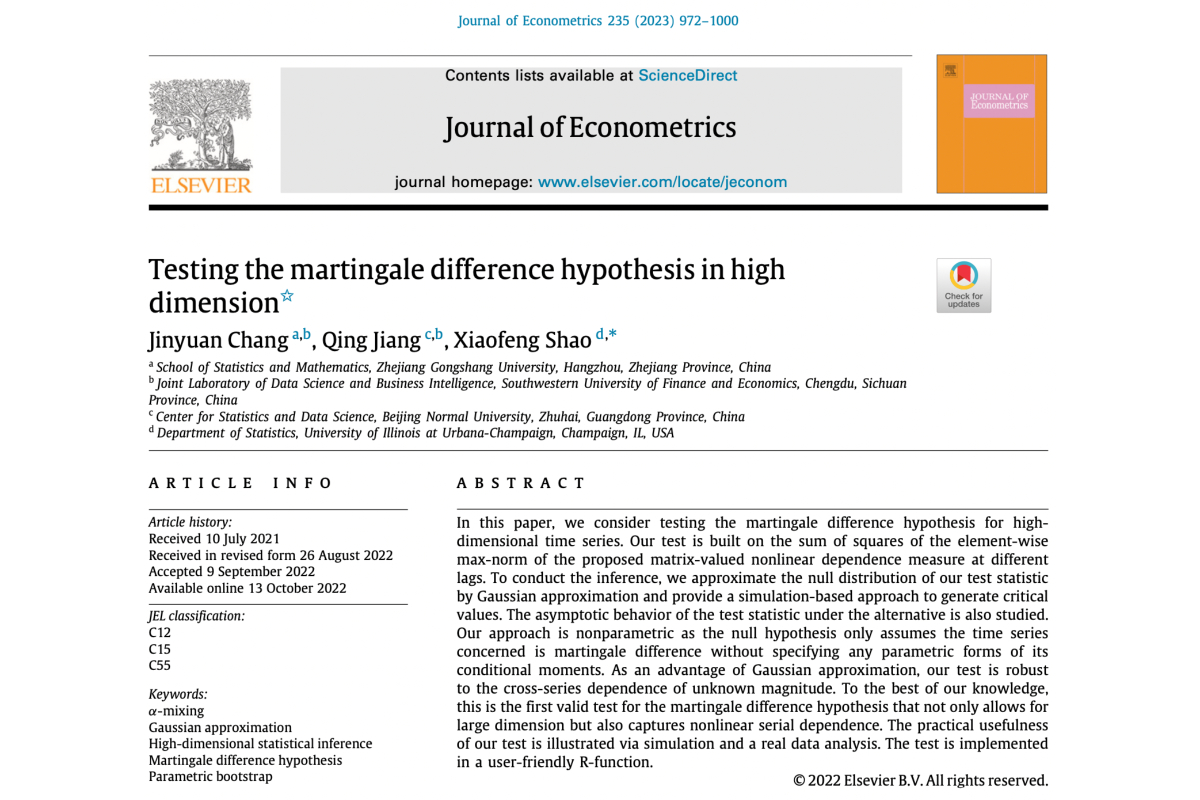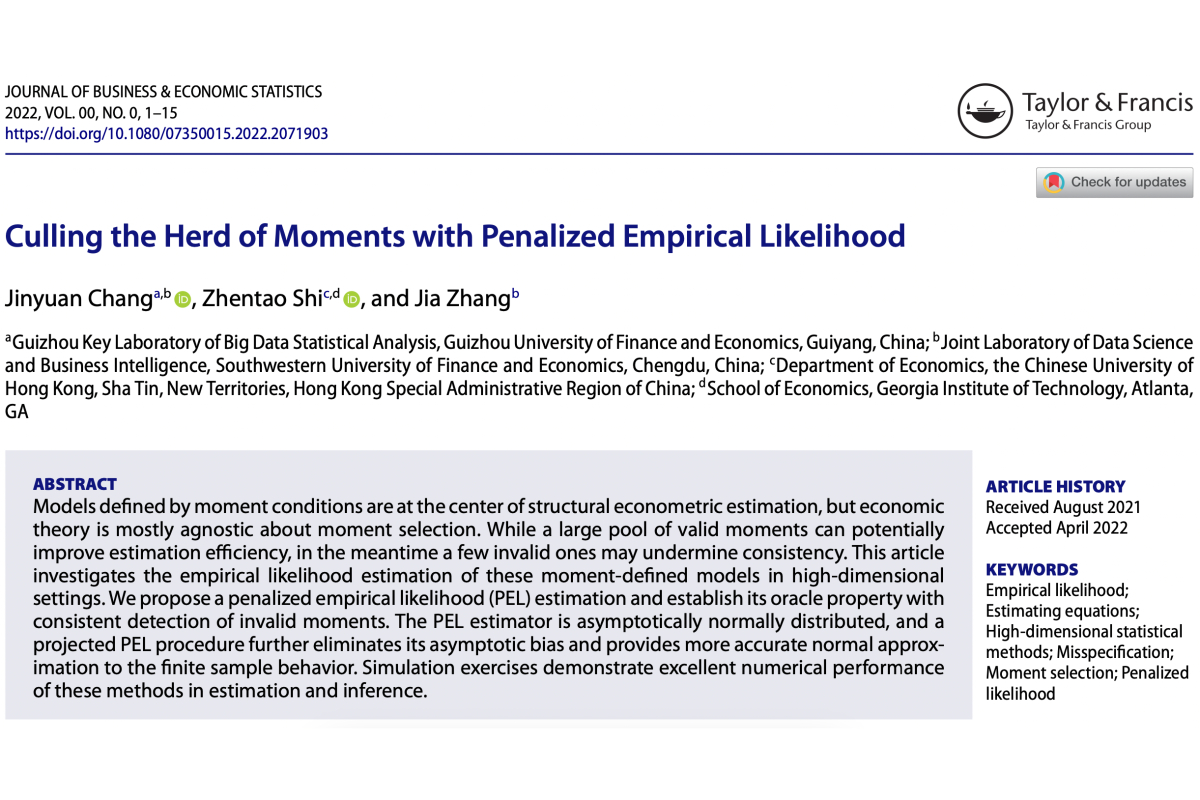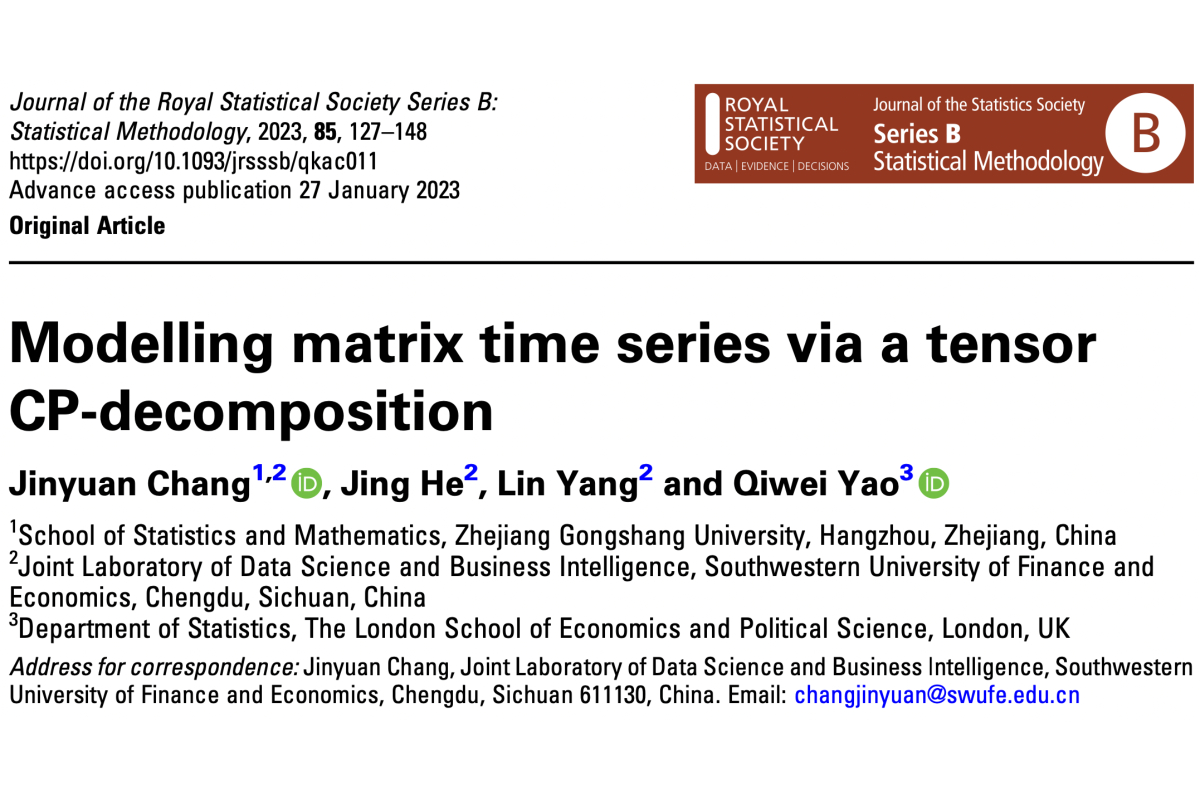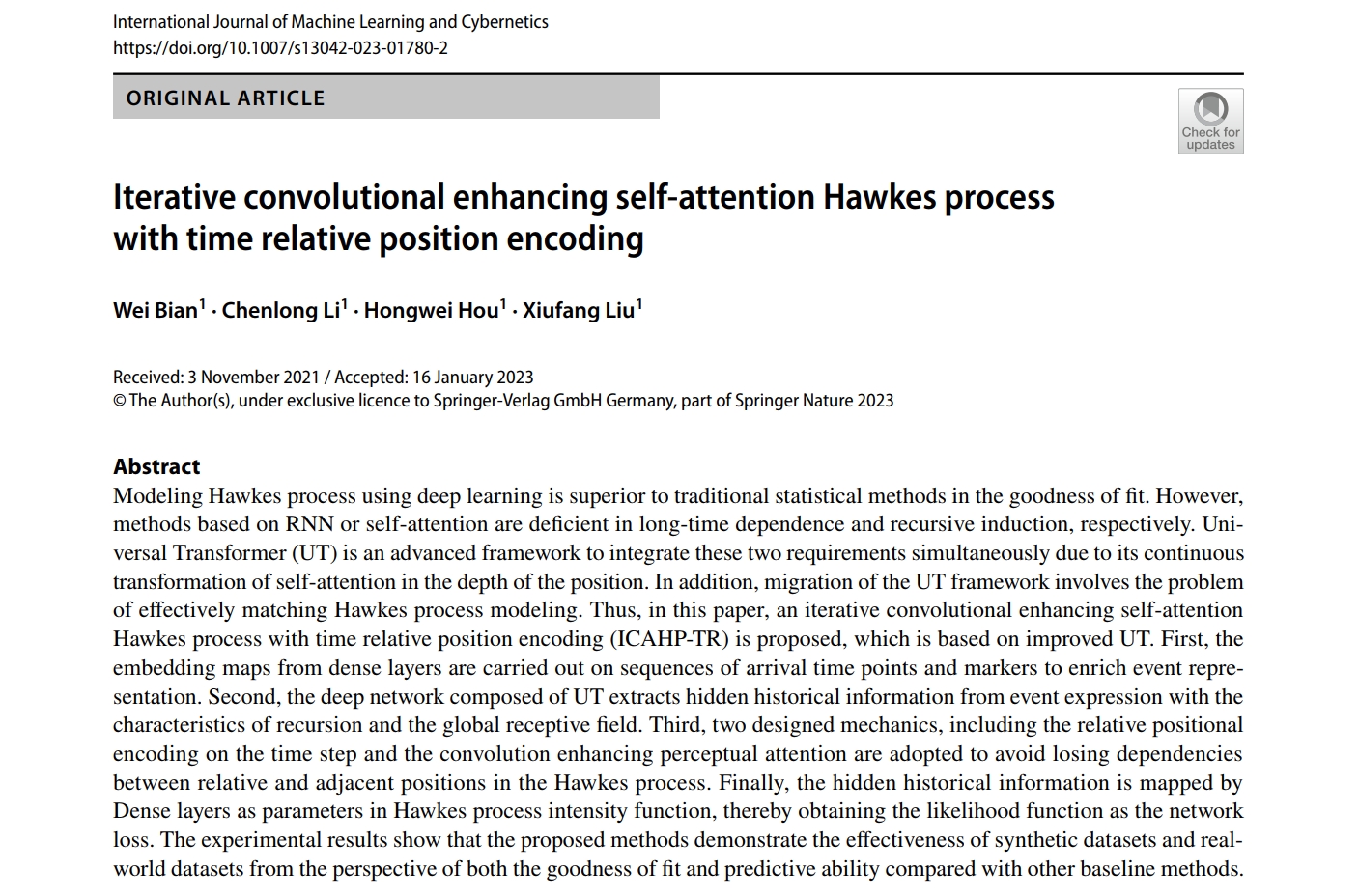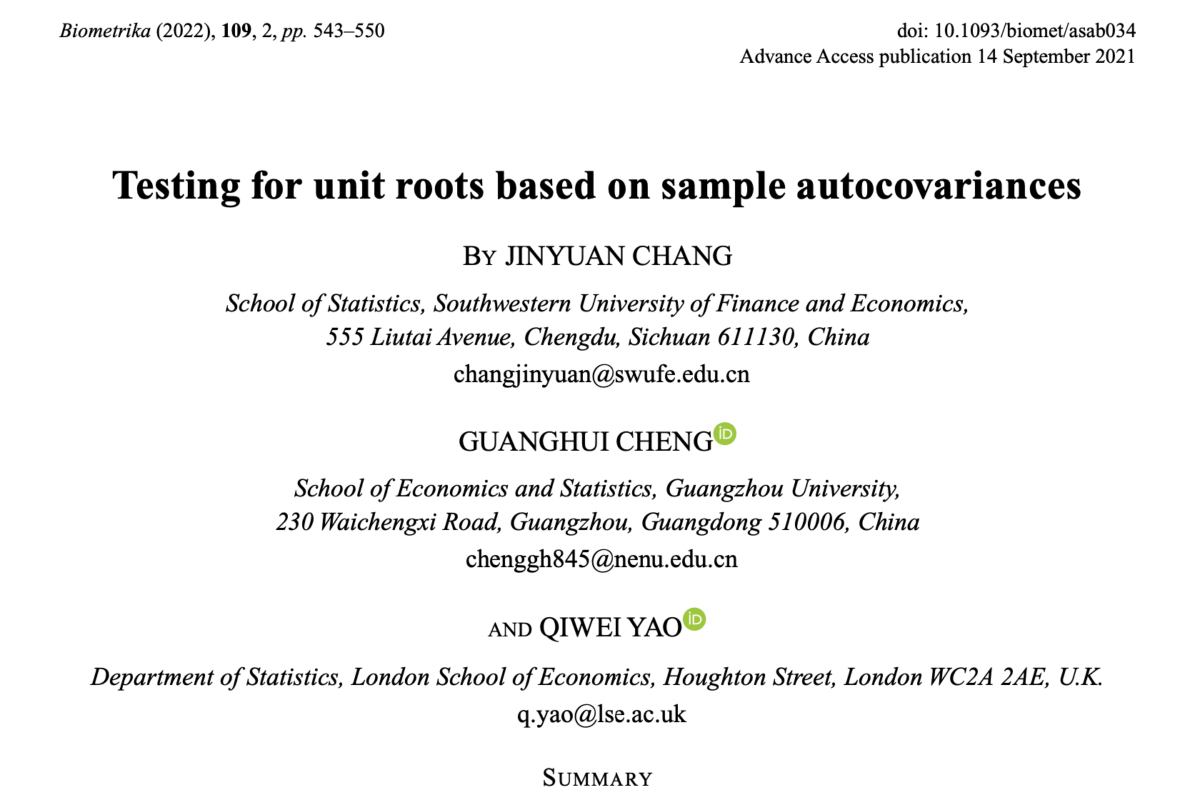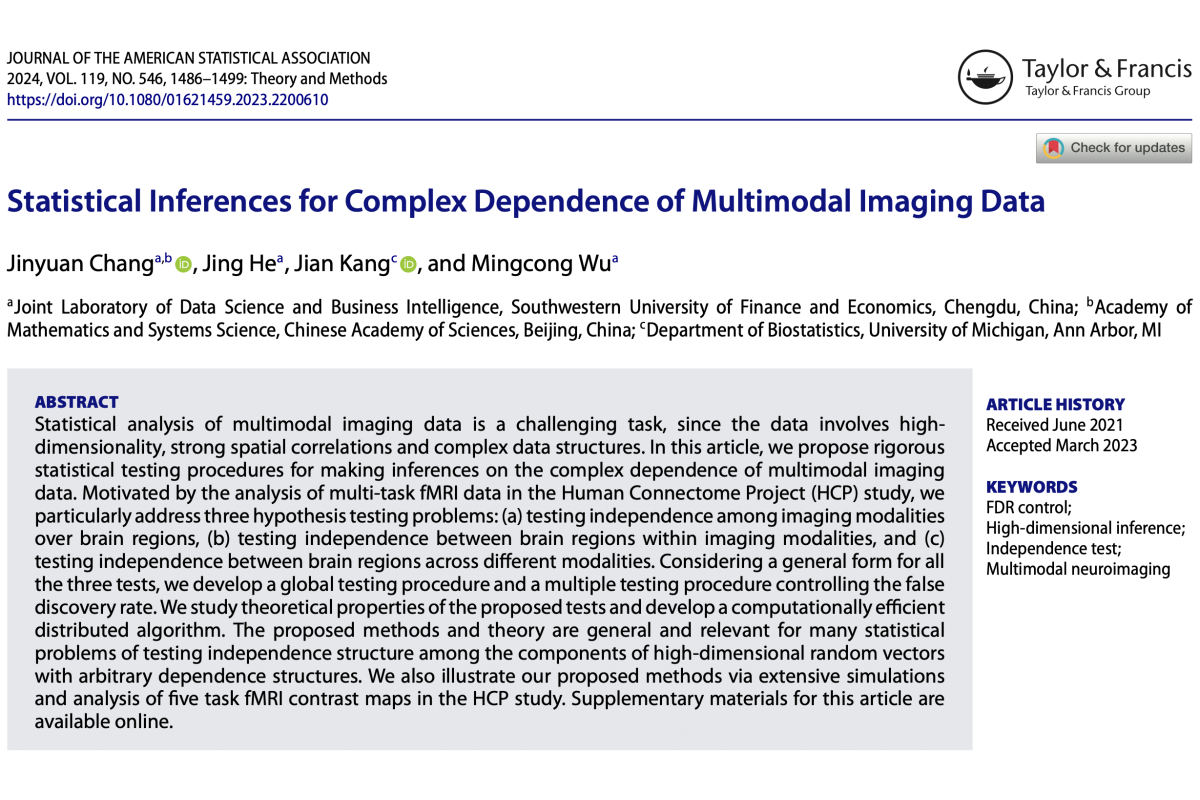
Chang, J., He, J., Kang, J., & Wu, M. (2024). Statistical inferences for complex dependence of multimodal imaging data. Journal of the American Statistical Association, 119, 1486-1499.
Statistical analysis of multimodal imaging data is a challenging task, since the data involves high-dimensionality, strong spatial correlations and complex data structures. In this article, we propose rigorous statistical testing procedures for making inferences on the complex dependence of multimodal imaging data. Motivated by the analysis of multi-task fMRI data in the Human Connectome Project (HCP) study, we particularly address three hypothesis testing problems: (a) testing independence among imaging modalities over brain regions, (b) testing independence between brain regions within imaging modalities, and (c)testing independence between brain regions across different modalities. Considering a general form for all the three tests, we develop a global testing procedure and a multiple testing procedure controlling the false discovery rate. We study theoretical properties of the proposed tests and develop a computationally efficient distributed algorithm. The proposed methods and theory are general and relevant for many statistical problems of testing independence structure among the components of high-dimensional random vectors with arbitrary dependence structures. We also illustrate our proposed methods via extensive simulations and analysis of five task fMRI contrast maps in the HCP study. Supplementary materials for this article are available online.

